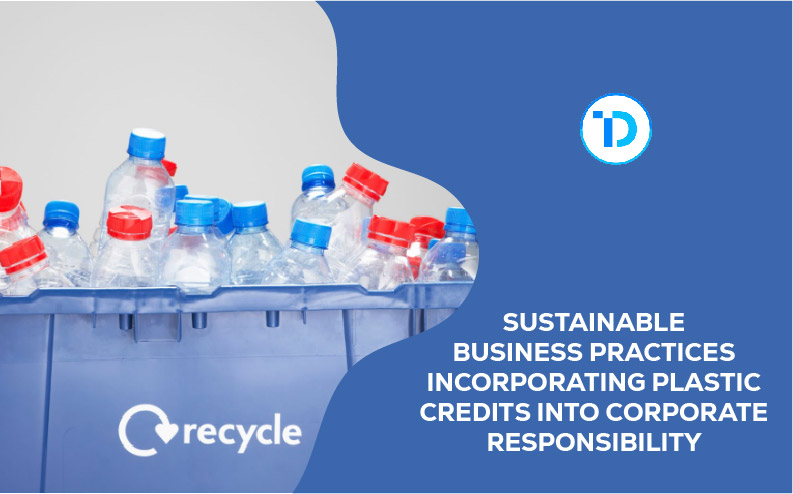In an era marked by environmental consciousness, businesses across the globe are under increasing pressure to demonstrate their commitment to sustainability. Among the various strategies being adopted, the integration of plastic credits into corporate responsibility programs stands out as a particularly innovative approach. This article explores how businesses can leverage plastic credits to enhance their sustainability strategies, thereby contributing to environmental conservation and reaping a range of benefits.
Understanding the Plastic Crisis
The world is grappling with a severe plastic pollution crisis, with millions of tonnes of plastic waste generated yearly, much of which ends up in our oceans, rivers, and landscapes. This not only poses a significant threat to marine life and ecosystems but also to human health and the global economy. Traditional waste management practices have proven insufficient in addressing the scale of this issue, prompting the need for innovative solutions. Plastic credits emerge as a promising tool in this context, offering businesses a way to offset their plastic footprint by supporting plastic waste collection and recycling initiatives.
The Mechanism of Plastic Credits
Plastic credits operate on a principle similar to carbon credits, allowing companies to compensate for their unavoidable plastic usage by investing in projects that recover and recycle an equivalent amount of plastic waste. These initiatives not only aim to reduce the volume of plastic in the environment but also often support local communities by creating jobs and enhancing waste management infrastructure.
The journey towards incorporating plastic credits into a company’s environmental strategy begins with a comprehensive assessment of its plastic footprint—the total volume of plastic waste generated by its operations and products. Following this assessment, companies can purchase plastic credits from certified projects, thereby taking responsibility for their impact on the environment.
Advantages of Adopting Plastic Credits
Enhancing Brand Image and Consumer Trust
Active participation in plastic credit schemes allows companies to showcase their commitment to environmental sustainability, significantly enhancing their brand image. This proactive stance on environmental conservation builds trust with eco-conscious consumers, who are increasingly favouring brands that align with their values.
Meeting Regulatory and Sustainability Goals
With governments around the world tightening regulations on plastic use and waste management, plastic credits offer a viable solution for companies to comply with these regulations and achieve their sustainability objectives.
Supporting Circular Economy Initiatives
Investing in plastic credit projects promotes the development of a circular economy, emphasizing keeping plastic in use for as long as possible and minimizing waste. This approach not only addresses the plastic crisis but also fosters economic innovation and resilience. By redirecting financial resources towards projects that prioritize recycling, reuse, and recovery of materials, businesses can play a pivotal role in reducing the demand for virgin plastic production, thereby decreasing environmental pollution and resource depletion. Moreover, this investment in circular economy initiatives catalyzes the creation of new business models and market opportunities, encouraging other sectors to adopt sustainable practices. It demonstrates a commitment to not just mitigating environmental impacts but also to pioneering a shift towards a more sustainable and economically viable future, where waste is seen as a valuable resource rather than a byproduct.
Fostering Innovation and Collaboration
The plastic credit system not only encourages companies to rethink their product design and packaging solutions, aiming to reduce reliance on single-use plastics but also serves as a catalyst for innovation across industries. By incentivizing the development of alternative materials and eco-friendly packaging, it pushes companies to explore new technologies and sustainable practices that were previously considered unfeasible or cost-prohibitive. Furthermore, this system facilitates collaboration with waste management and recycling initiatives, fostering a collective effort towards a sustainable future. It creates a platform for businesses, environmental organizations, and local communities to work together, sharing knowledge, resources, and best practices. This collaborative approach not only amplifies the impact of individual efforts but also accelerates the transition to a circular economy, where the value of products and materials is maintained for as long as possible. Through these partnerships, companies can contribute to the creation of a more resilient and sustainable global ecosystem, demonstrating leadership in corporate responsibility and environmental stewardship.
Strategic Implementation of Plastic Credits
For businesses keen on integrating plastic credits into their corporate responsibility strategies, a methodical and strategic approach is crucial. This involves:
- Conducting a thorough assessment of the company’s plastic usage to understand its baseline plastic footprint.
- Identifying credible plastic credit schemes that align with the company’s sustainability goals and values. Projects like Tontoton’s plastic credit initiative offer transparent and impactful options for businesses looking to make a difference.
- Transparently reporting on the impact of their investments in plastic credits, thereby demonstrating accountability and commitment to stakeholders.
Moreover, it’s essential for companies to view plastic credits not as a standalone solution but as part of a comprehensive sustainability strategy. This broader strategy should encompass efforts to reduce plastic use at the source, redesign products for better recyclability, and engage consumers in responsible consumption practices.
The Road Ahead
As the global community intensifies its fight against plastic pollution, the role of businesses in this battle becomes increasingly critical. By adopting plastic credits, companies can mitigate their environmental impact and contribute to the broader movement towards sustainability. This not only helps address the urgent challenge of plastic pollution but also opens up new avenues for innovation, collaboration, and growth in an eco-conscious market landscape.
In conclusion, the integration of plastic credits into corporate responsibility programs represents a forward-thinking approach to business sustainability. It offers a practical pathway for companies to address their environmental footprint while contributing to global efforts to combat plastic pollution. As more businesses embrace this model, the collective impact on reducing plastic waste and promoting a healthier planet could be significant.
